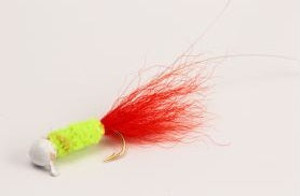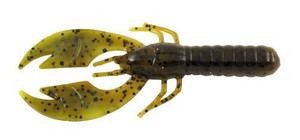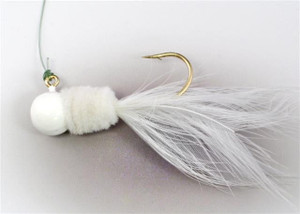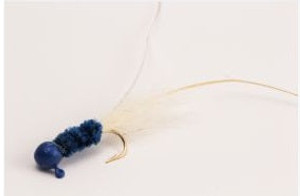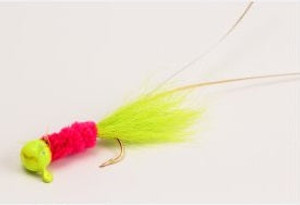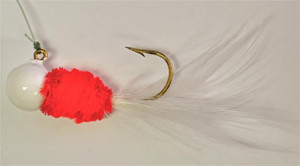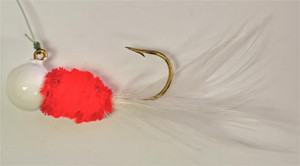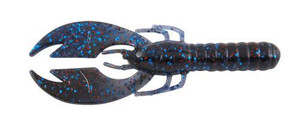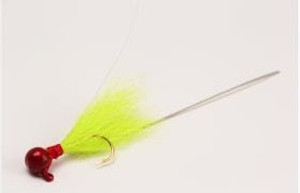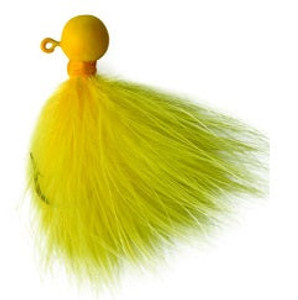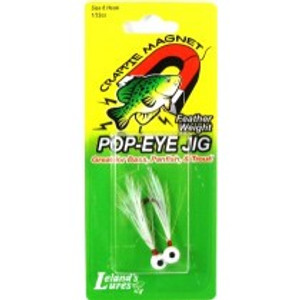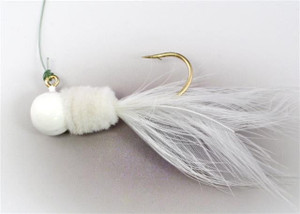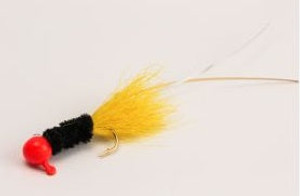
Precision Jigs for Crappie Success
Crappie fishing is an art, and one of the most crucial tools in an angler's tackle box is the crappie jig. These meticulously crafted lures are designed to dance through the water, enticing crappie with a combination of movement and color that is simply irresistible. Whether you are a seasoned angler or a beginner, understanding how to use these jigs effectively can significantly increase your chances of success on the water.
The Art of the Jig
Crappie jigs are available in a variety of styles, each with its unique appeal. The two main categories are feathered jigs and soft plastic jigs. Both types have their advantages and can be incredibly effective when used correctly.
Feathered Jigs
Feathered jigs are designed to mimic the movement of small baitfish or insects. The feathers add a natural, lifelike action that can be particularly effective in clear water where crappie rely heavily on their vision to hunt. The subtle, fluttering motion of the feathers can trigger instinctive strikes from even the most cautious crappie.
Soft Plastic Jigs
Soft plastic jigs, on the other hand, offer versatility in terms of color and shape. These jigs can be molded into various forms, such as minnows, worms, or grubs, and dyed in an array of colors to match the local forage. Soft plastics are durable and can withstand multiple strikes, making them a favorite among anglers targeting aggressive crappie.
Techniques for Success
Using crappie jigs effectively requires more than just casting and retrieving. The key to success lies in how you manipulate the jig to mimic wounded or fleeing prey. Here are some techniques to help you get the most out of your crappie jigs:
Rod Twitches
- Subtle Twitches: Light, subtle twitches of the rod tip can make the jig appear as if it's a small fish struggling to swim. This can be particularly effective in calm water conditions.
- Erratic Jerks: More aggressive, erratic jerks can simulate a fleeing baitfish, triggering a predatory response from crappie that are in a feeding frenzy.
Depth Control
- Vertical Jigging: Drop your jig to the desired depth and use a slow, up-and-down motion to keep it in the strike zone. This method is especially effective when fishing around structure such as submerged trees or brush piles.
- Horizontal Retrieves: Cast your jig and let it sink to the desired depth, then retrieve it slowly with occasional twitches. This technique covers more water and can help locate scattered crappie.
Choosing the Right Jig
Selecting the right jig for the conditions can make all the difference. Here are some factors to consider when choosing your crappie jigs:
- Water Clarity: In clear water, opt for more natural colors and feathered jigs. In murky water, brighter colors and soft plastics with added scent can be more effective.
- Weather Conditions: On sunny days, metallic and reflective jigs can catch the light and attract crappie from a distance. On cloudy or overcast days, darker colors may stand out better.
- Local Forage: Match the color and size of your jig to the local baitfish or insects that crappie are feeding on. This increases the chances of your jig being perceived as a natural food source.
The Takeaway
Mastering the use of crappie jigs can elevate your fishing game and lead to more successful outings. By understanding the different types of jigs, employing effective techniques, and choosing the right jig for the conditions, you'll be well on your way to crappie fishing success. So, next time you hit the water, make sure your tackle box is stocked with a variety of precision jigs and get ready to reel in those crappie!


